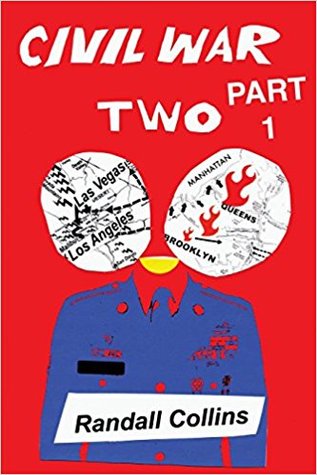The civil war in
Syria has now killed a quarter of a million people, and driven 4 million people
to foreign countries where they wait hopelessly in the limbo of refugee camps.
Half the people who remain in Syria are homeless. Out of a population once estimated
at 18 million, about
three-quarters have lost everything.
This
self-destructive war began in 2011 in the Arab Spring, imitating popular
demonstrations elsewhere in the region that temporarily brought down authoritarian
governments. But these were tipping-point revolutions, winning by contagious
mass enthusiasm that brought a segment of the regime's forces over to the
revolutionary side. Tipping points work best when the action is concentrated in
a capital city. But where struggles are dispersed, the regime fights back and
battles take place across the country, the moment when a few army leaders can
settle things by switching sides has passed. Concentration favors short and
relatively bloodless transitions; dispersion creates lengthy civil wars.
Syria had two big metropolitan
areas, each about 2.5 million. While fighting developed in Damascus in the
south, Aleppo in the north initially tried to stay out of it. But neutrals soon
become victims as conflict escalates. Rebels turned from peaceful
demonstrations to guerrilla tactics. Since guerrillas depend on hiding in the
civilian population, they made places like Aleppo into battlegrounds. Civilians
were hit both by guerrillas weapons and by the regime's counter-attacks. The
cycle of atrocities had begun, each side motivated by hatred and revenge for
what the other side did to them. In the atmosphere of polarization, neutrals
are condemned as no better than enemies. This helps explain the callous
disregard for the millions whose livelihood is destroyed in somebody else's
fight.
What can the rest of
the world do? The spontaneous
sentiment in a world of mass communications is to support the good guys and
help defeat the bad guys. The problem is that in this kind of war the good guys
turn into bad guys too. Guerrilla war is intrinsically messy, and
anti-guerrilla war carried out by air power tends to destroy everything on the
battlefield, no matter who happens to live there.
Outside intervention
makes things worse. A civil war
that would wind down by running out of resources is kept going artificially,
when outside regimes send in weapons and fighters to their favorite factions.
Ideological wars are particularly vicious, since an ideology recruits the most
dedicated believers. Today this is
most obviously militant Islam, but the same destructiveness has been seen for
ideological volunteers fighting for fascism, communism or democracy, as in the
Spanish civil war of the 1930s.
And multi-sided
conflicts are most difficult to settle. A two-sided war has a clear termination
point. But three, four, five or more factions, especially when they have
independent bases and external allies, make an intrinsically unstable
situation, where the weakening of some factions opens up opportunities for
others to form. This is chaos in the technical sense of the term; the system
does not stabilize if one faction is destroyed, it just gives rise to further
conflicts.
In such a
configuration, the rise of something like ISIS was predictable. Its potential
destruction will not end the instability. Syria was not simply democratizers
vs. Assad's regime; but Sunnis, Shi'ites and sub-factions (Alawites, Druze),
and Christians; Arabs and Kurds; plus tribal alliances. Superimposed on this
are the outside interventions, some motivated by religious sympathies, others
by geopolitical aggrandizement.
High-minded outsiders like the US are not exempt; whether our motive is
fostering democracy, countering terrorism, or just acting like a Great Power,
we add one more source of fuel for the fire.
Is there any
realistic solution? Hobbes
proposed, apropos of the English civil war of the 1640s, that any strong regime
is preferable to endless fighting of everyone-against-everyone-else. It is hardest to see this at the
outset, when everyone is enthusiastic for their cause and sure they will win.
But once a conflict has been going on long enough, many people realize that the
fighting is worse than whatever we were fighting about. This is certainly the
case in a civil war like Syria that has been going on for almost six years and
destroyed three-quarters of the country.
The emergence of a
sentiment for peace ushers in the most difficult phase of political conflict:
the peace movement opposed by the hard-liners. There are hard-liners in
different factions, but united in the emotion that their sacrifices should not
be in vain, that they must continue to fight because victory by the enemy is
unthinkable. The new axis of conflict becomes victory at any cost, against
peace while there still is something to be saved.
Hobbes' solution in
Syria would be to let the Assad regime win. None of the fanatical religious
factions would bring a stable government; the Assad regime at least has
protected minorities like Christians. This solution would be unpalatable to
many, especially to outsiders who have other concerns than the plight of the
Syrian population. This includes politicians in the U.S. who don't want to look
weak, and whose only idea is to throw more military force into the chaos. A
really courageous diplomatic move, allying the US and Russia to end the war
with an Assad victory, would save lives. The alternatives are to go on
destroying what is left of Syria, and generating even more of a refugee crisis.
A U.S.general in
Vietnam, after obliterating a village, said that in order to save the place it
was necessary to destroy it. Can
we learn enough from history to stop following this kind of thinking?
Goodreads Book Giveaway
Civil War Two, Part 1
by Randall Collins
Giveaway ends May 24, 2018.
See the giveaway details at Goodreads.
Further analysis in:
Randall Collins,
"Tipping Point Revolutions and State-Breakdown Revolutions,"
